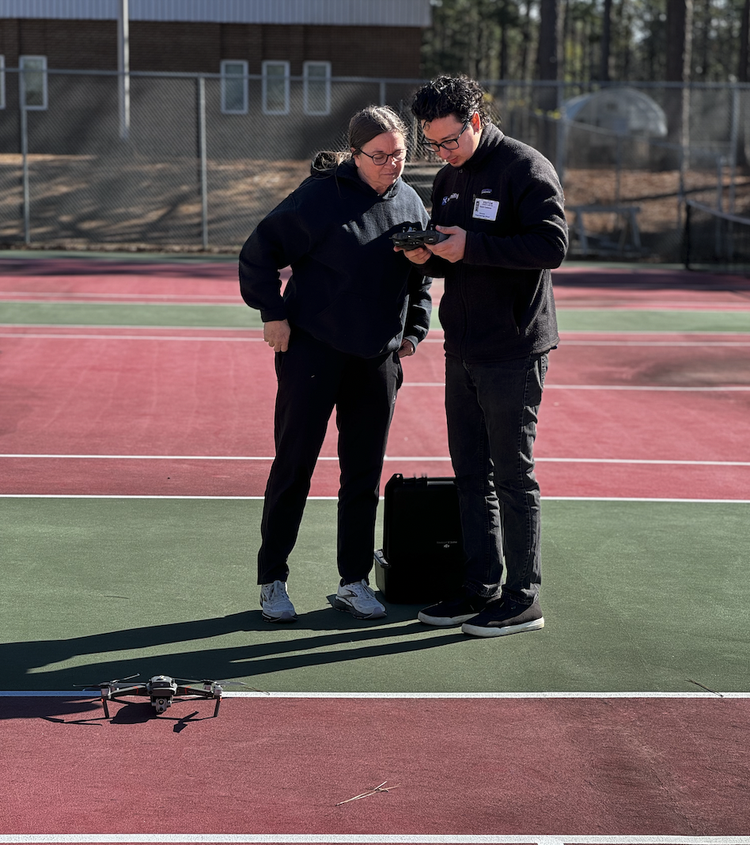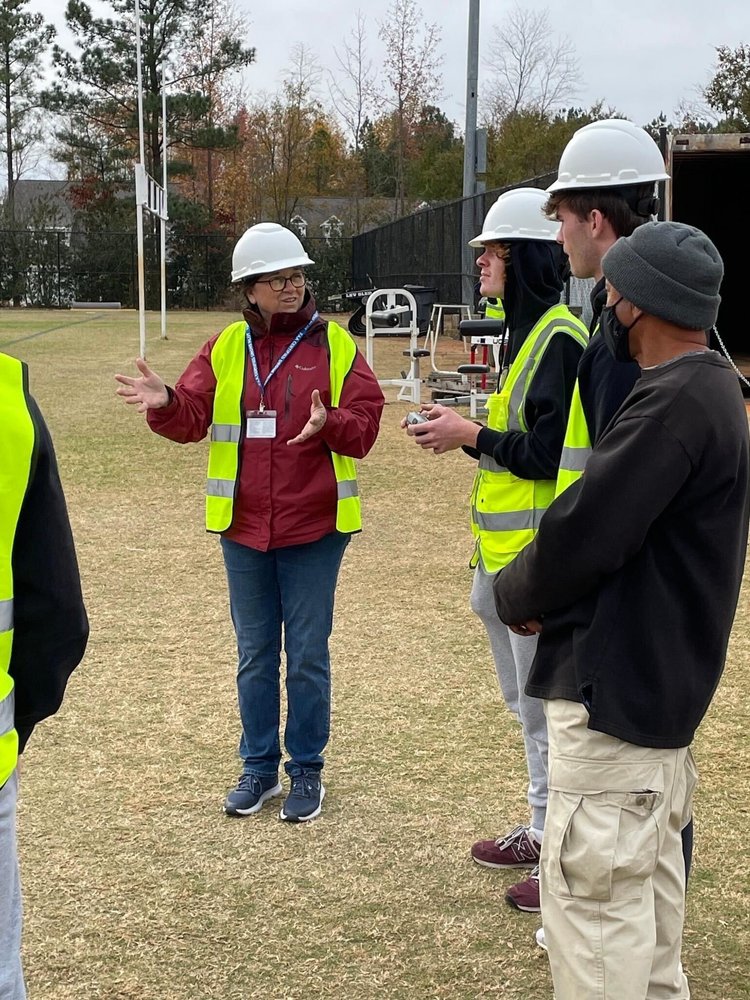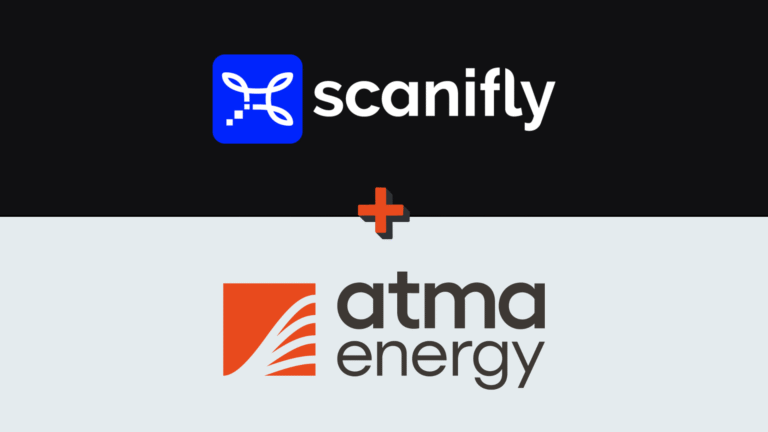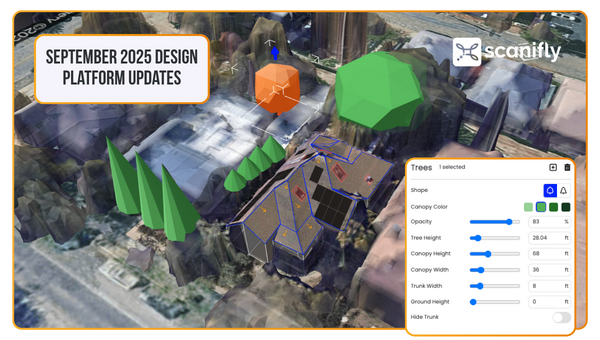By: Daniel Castano, Lead Technical Trainer at Scanifly
TL;DR: Denise Renfro at Douglas Byrd High School in Fayetteville, North Carolina, launched a renewable energy course that teaches students the basics of photovoltaics, solar electrical, and roof anatomy. Career-focused programs like these are a fantastic complement to traditional math, science, arts, and language education because they position young people for rewarding (and lucrative) careers. I had the opportunity to help Denise Renfro, the program director, integrate Scanifly Academy into the curriculum; here’s my reflection after an in-person training day.
Drones don’t just have a cool factor that appeals to all ages—they can unlock career opportunities for youth.
Denise Renfro noticed that she had significant excitement in her Douglas Byrd High School course that teaches drone flight skills. But she wanted to leverage that excitement to get youth to learn real-world skills that would translate to opportunities in the future. For example, drone pilot skills command a salary premium in the solar industry, but only for Surveyors who understand the basics of roof anatomy and solar electrical.
After looking for potential partners, Denise reached out to Scanifly. I had the opportunity to work with her, extending and adapting the Scanifly Academy curriculum for high school students.
The Douglas Byrd HS origin story is unique, and brings intriguing potential for youth across the country, even beyond solar. Here’s more!
The Spark of Change
After I gave a presentation to the Center for Renewable Energy Advanced Technological Education (CREATE) Group, a woman came up to me—her name was Denise.
Apparently, Denise had just started expanding the Green Technology Academy at Douglas Byrd High School. In particular, she wanted to leverage existing programming—like teaching kids how to fly drones—to connect to the renewable energy industry. Solar was to be her first entry point, so she was looking for potential partners for her curriculum. We were expanding Scanifly Academy and wanted to road-test the curricula in multiple contexts, so the timing was perfect.
The key would be adjusting Scanifly Academy’s curriculum—which was built for in-field professionals—to fit the context and age-appropriateness of high school students. That was something I was happy to work on alongside Denise.
“I am always looking for ways to put technology into my students’ hands, and Scanifly perfectly aligned with our academy’s focus on renewable energy and, more specifically, the solar industry,” said Denise. This alignment with our Career and Technical Education program’s goal to make students career-ready made Scanifly an ideal partner for us.”
Teaching the Skills of Tomorrow

With Denise’s program expansion in its early days, I went to Fayetteville. My role was to showcase Scanifly and help “train the trainer” so Denise could later bring Scanifly into their classrooms.
I was amazed to see what Denise had already built: her course focused on learning drones, getting a Part 107 license, and learning the foundation of renewable energy and electric vehicles. Scanifly Academy brought in-depth knowledge of roof anatomy, solar electrical, photogrammetry, photography, and solar array design.
“Despite the inherent complexities of integrating new programs within a large educational system, Scanifly’s team demonstrated remarkable support and flexibility, ensuring a seamless integration process,” said Denise. “Their responsiveness and commitment made us feel valued, facilitating a positive and productive partnership.”
But one thing I noticed by merging Scanifly Academy with Denise’s existing curriculum is the potential impact. For example, this course could give people a direct line into high-paying careers like solar surveying, roofing contractor, or becoming a certified electrician. Even more, the basics of design and photography give students transferable skills in multiple industries, including tech.
“Beyond simply preparing students for drone-based roles in the solar industry, the program provides a broader spectrum of valuable skills,” said Denise. “It demands discipline, focus, and analytical thinking, while also fostering professional soft skills and enhancing drone piloting proficiency. The experience offers students a significant advantage, whether they choose to enter the workforce directly or pursue further education.”
The whole experience got me thinking about how many doors a course like this could open for students. For example, a student who might have had trouble paying for college could use skills from this program to earn over $20 per hour as a drone pilot for solar surveying; those funds could go toward higher education. Or, if someone decided college wasn’t a fit for them, the skills they learned through this course would make it easy to start a career in renewable energy or at a tech company in a junior design role.
Building a Brighter Future
After my day was over, I walked back through the school halls with Denise; students kept coming up to her, excited because they heard she was launching a new program where they could learn about drones and other cool technology.
It gave me so much excitement for the future. Looking ahead, Scanifly plans to build an even stronger onboarding program so that any educational institution—from other high schools to universities and technical schools—can leverage Scanifly Academy in their renewable energy curriculum.
To achieve the 2030 climate goals in the US alone, we will need to triple the number of solar professionals; we are nowhere close. Efforts combining Douglas Byrd and Scanifly will contribute to this. Our hope is to enable as many people as possible, from all kinds of backgrounds, to build the skills and mindset they need to launch into successful, in-demand, and high-paying careers and business opportunities.
But we know we cannot do this alone. Partnering with educational institutions is a privilege, and I’m excited to keep pushing forward.






